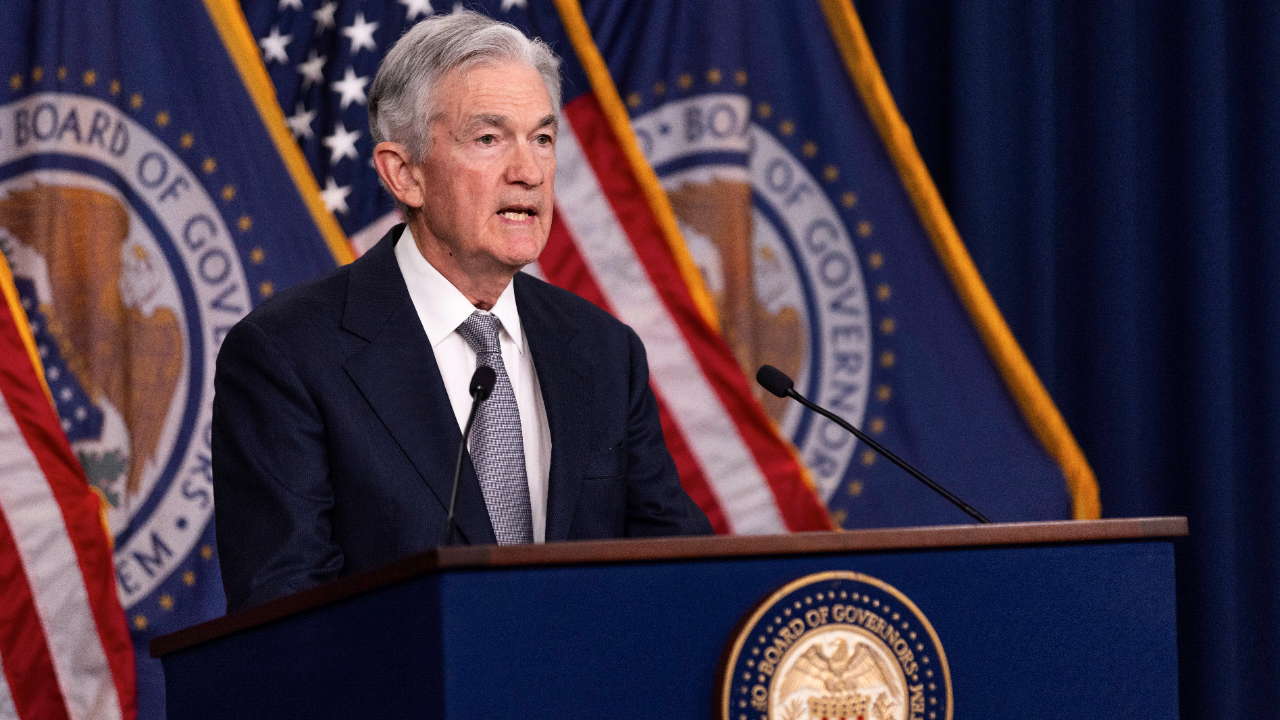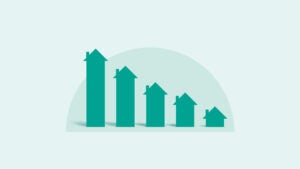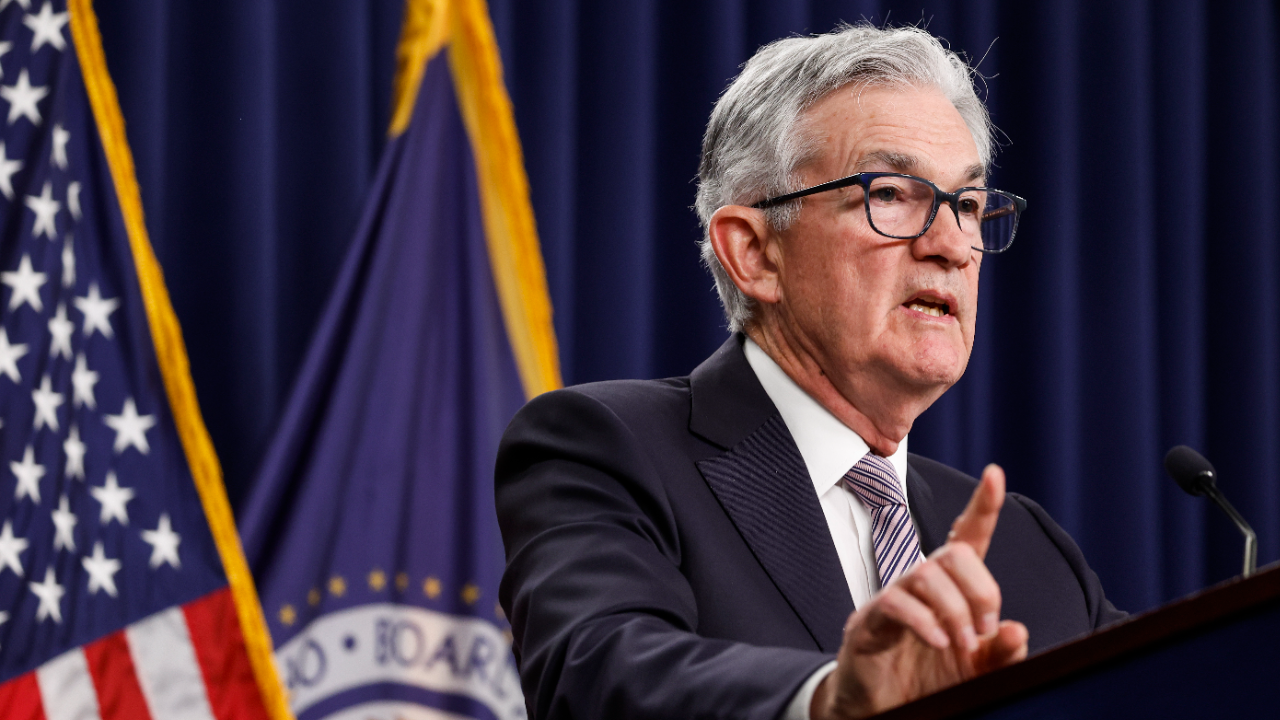The Fed didn’t cut interest rates this month. Here are 12 key money moves to make

Key takeaways
- The Federal Reserve left its key borrowing benchmark at a decade-plus high of 4.25-4.5 percent, as inflation stays elevated.
- Shopping around for competitive borrowing rates, paying down high-cost debt and keeping an eye on refinancing opportunities can help Americans manage their finances better when rates are high.
- Interest rates on savings accounts and CDs have edged lower, but savers can still find competitive offers, particularly from online banks.
Interest rate cuts from the Federal Reserve appear to be on hold, at least for now — dashing consumers’ hopes of returning to a cheaper borrowing environment anytime soon.
At its Jan. 28-29 meeting, the Federal Open Market Committee (FOMC) voted to keep its key borrowing benchmark unchanged at a decade-plus high of 4.25-4.5 percent. Policymakers are also expecting to cut interest rates less in 2025 than they did in the year before, as inflation picks up and fears of an economic slowdown ease.
The Fed’s benchmark, the federal funds rate, has a domino effect on virtually every borrowing cost that consumers pay — from credit cards and auto loans, to adjustable-rate mortgages and personal loans. Rates tend to move in lockstep, meaning cuts from the Fed are the key to making it cheaper for consumers to borrow money.
Here’s your 12-step plan for taking charge of your wallet as interest rates stay high.
The fact that interest rates took the elevator going up in 2022 and 2023 but will take the stairs coming down in 2024 and 2025 is better news for savers than borrowers.— Greg McBride, CFA , chief financial analyst for Bankrate
1. Get a snapshot of your personal finances
Before you can make a proper financial game plan, you’ll need to get an idea of your current financial state, including how much debt and savings you have. Once you form a baseline understanding, you’ll be better informed about your financial strengths — and your potential weak spots. After all: There’s hardly a perfect time to make a big-ticket purchase. It all comes down to your wallet and whether you’re ready for it.
Print out statements from any account housing liquid cash — or money you could withdraw without penalty. Those are most likely savings accounts, but they could also be funds in a money market account or no-penalty CD. Even better, note each account’s annual percentage yield (APY).
Next, list your debt, including your outstanding balance and the interest rate you’re charged. Keep tabs on whether that debt has a fixed or variable rate, and note how much interest you pay per month.
Then, keep track of the income and expenses flowing in and out of your budget each month.
2. Keep chipping away at high-interest rate debt
One piece of advice stays the same, regardless of what the Fed does with interest rates: Prioritize eliminating your high-interest rate debt.
Even during low-rate periods, credit card debt can be burdensome. Back in 2020, for example, the average credit card rate hovered around 16 percent even though the federal funds rate was in a target range of 0-0.25 percent, according to Bankrate data. Today, it’s dropped just 64 basis points despite a full percentage point of cuts from the Fed.
If you aren’t paying off your balance in full each billing cycle, it’s likely costing you hundreds — if not thousands — of extra dollars a month. Many Americans might be finding themselves in this situation, as pricier essentials and higher interest rates compound to create a cycle of debt. Almost 2 in 5 cardholders (37 percent) have maxed out a credit card or come close since the Federal Reserve began raising interest rates in March 2022, according to Bankrate’s Credit Utilization Survey.
“The Fed’s going to have to cut rates a whole bunch of times before your rate gets below 21 percent,” McBride says. “Interest rates aren’t going to fall far enough, fast enough to bail you out of a bad situation.”
If you’re carrying credit card debt, consider utilizing a balance-transfer card. Most cards start borrowers with a rate as low as zero percent for a specified number of months — currently a maximum of 21 months — before transitioning to the regular annual percentage rate (APR). Without having to pay interest, you’ll be able to significantly accelerate your debt repayment.
The advice to pay down debt as quickly as possible doesn’t apply to those with fixed-rate debts such as mortgages or car loans with “low and mid-to-single-digit rates,” McBride says. You might be better off putting that money toward other avenues that meet your financial goals, such as saving or investing.
3. Shop around for the most competitive borrowing rates
Interest rates on the loans that directly track the federal funds rate — such as home equity loans and home equity lines of credit (HELOCs), adjustable-rate mortgages, credit cards, car loans and more — have all ratcheted lower recently in response to the Fed’s previous rate cuts. A Fed on pause means rates likely won’t fall much lower.
Americans with variable-rate debts, however, could still see their interest rate edge lower in the coming weeks, given that many products readjust within one-to-two billing cycles of a rate cut.
If you’re in the market for a loan or thinking about making a big-ticket purchase that requires financing, shopping around will continue to be one of the most important steps consumers can take. Some lenders might be even more inclined to offer better deals than others to lure new customers. Financial experts typically recommend comparing offers from at least three lenders before locking in a loan.
4. Continue to keep an eye on refinancing opportunities
Even as the Fed keeps interest rates steady, some borrowers might still have some refinancing opportunities in front of them — depending on how much they can shave off of their monthly payment.
“Holding out, waiting for the perfect rate — that’s hard to justify when you’re stuck carrying this debt at a high rate every month you wait,” McBride says. “When mortgage rates were 6.2 percent last September, those who waited on refinancing because rates were expected to go lower are still waiting.”
The typical rule-of-thumb for refinancing most forms of debt is seeing whether you can reduce your interest rate by at least half a percentage point, McBride says. For example, homeowners who locked in a 30-year fixed-rate mortgage when it peaked at 8.01 percent might be able to find a better deal right now — even as mortgage rates hold above 7 percent for four weeks.
Homeowners, though, might want to consider how long they plan to stay in their home, while Americans thinking about refinancing auto, personal or home equity loans will want to avoid any prepayment penalties.
5. Work on boosting your credit score
If there’s any factor that inhibits consumers’ ability to borrow cheaply more than the Fed, it’s their personal credit scores. Most of the time, financial companies save the best rate for the so-called “safest” borrowers: those with good-to-excellent credit scores and a reliable credit profile.
Companies even tend to grow pickier about who they approve for loans when rates are high. Half of Americans who applied for a loan or financial product between March 2022 and February 2024 were rejected at least once, according to a Bankrate survey published in March 2024. Rejection rates were highest for individuals with credit scores below 670.
To improve your credit score, concentrate on making all of your debt payments on time and keeping your credit utilization ratio as low as possible — the two factors with the biggest influence on how your rating is calculated.
6. If you need to make a big-ticket purchase, don’t hold out for lower borrowing costs
The Fed is expecting to cut interest rates by only half a percentage point this year, which would keep financing costs higher than at any point since the Great Recession. As a result, the price that consumers pay to borrow money is expected to fall only modestly this year, according to McBride’s 2025 interest rate forecast. Those minimal savings might not outweigh the inconveniences of living without an essential item.
“If your dishwasher breaks and you need a new one but it means financing it, are you going to wash the dishes by hand in the next six months in hopes that you can finance it at a lower rate at the end of the year?” McBride says. “Rates aren’t going to come down fast enough or soon enough to validate that decision.”
As for prospective homebuyers, mortgage rates aren’t guaranteed to fall when the Fed cuts rates. Despite a full percentage point of rate cuts from the Fed, the average rate on a 30-year fixed mortgage has increased 86 basis points since Sept. 18, Bankrate data shows.
“If you can find a place that meets your needs for the next 10 years, and it’s in your price range, you can’t afford to just sit back and wait for mortgage rates to fall,” McBride says. “Somebody else is going to grab it.”
7. Keep up frequent communication with your credit card issuers
Issuers might also be inclined to give you a new APR if your credit score improves, says Bruce McClary, spokesperson for the National Foundation for Credit Counseling.
It leads to another crucial step in your financial plan: opening up the channels of communication with your credit card issuer.
“It’s sad how few people talk to their creditors when times are good because it’s when you have those conversations, you realize a lot of really great things you could be doing to save even more money,” he says.
In today’s high-rate environment, it’s worth reviewing your cardholder agreement and making sure you know how your issuer calculates your APR. Credit card companies, by law, have to give cardholders a 45-day notice if they’re going to increase their cardholder’s interest rate for reasons other than responding to the Fed.
“Credit card companies do have some latitude in deciding when and how much to increase a cardholder’s interest rates within the confines and constraints of the Card Act,” McClary says. “It’s in those areas that the details are going to be in the cardholder agreement.”
8. Find the right place to keep your savings
Savers have benefited from the Fed’s high-rate era (if they’ve been keeping their cash in an online bank, that is). The highest-yielding online savings account is offering a 4.75 percent APY, eclipsing the current annual inflation rate of 2.9 percent, according to the latest data from the Bureau of Labor Statistics’ consumer price index (CPI).
That trend looks poised to continue the longer the Fed refrains from cutting rates. Similar to how borrowing costs fall when the Fed cuts rates, so, too, do yields on savings accounts and CDs.
“Savers seeking out the most competitive offers will remain well ahead of inflation for the foreseeable future,” McBride says.
Typically, online banks can reward their depositors with higher yields because they don’t have to pay the overhead associated with operating a brick-and-mortar financial institution.
But saving money isn’t just about yield-chasing. A crucial part of any financial plan is having cash for emergencies. Experts typically recommend storing six months’ worth of expenses in a liquid and accessible account. Even if you can’t afford to stash that much away, any little bit can help protect you from accruing high-cost credit card debt when an unexpected expense pops up.
“Building a rainy day fund is really important, even if the interest rate you’re earning on those funds is lower than the inflation rate,” says Mike Schenk, deputy chief advocacy officer at the Credit Union National Association. “Put a little bit into a savings account over time, and before you know it, you’ll have a chunk of savings that can give you a better night’s sleep at the very least.”
9. Consider a fixed-rate CD if you already have an emergency fund
Yields on certificates of deposit (CDs) have already edged lower as the Fed has cut rates. Case in point:
But at this time last year, CD yields were expected to be even lower than they are currently — a silver-lining to the Fed keeping interest rates higher for longer.
If you already have at least six to nine months’ worth of expenses stashed away in a savings account and don’t mind locking away your cash, a CD might be a strong — and safe — way to add some yield to your portfolio of investments, including for retirees. CD yields are fixed, meaning savers hold onto the rate until maturity, even if the Fed starts cutting borrowing costs again.
“Now is the time to lock in high-yielding CDs,” McBride says. “There is no advantage to waiting, as yields will trend lower as we get closer to the first Fed rate cut and accelerate further the longer you wait.”
10. Start recession-proofing your finances
The chances of the Fed slowing inflation without causing a recession look brighter than they did in 2022, and last year’s rate cuts were intended to make sure those odds stay that way.
Yet, it’s still wise to prepare for the unexpected. Interest rates aren’t as high as they were previously, but monetary policy is still slowing the economy.
Recessions aren’t always as severe as the coronavirus pandemic, the Great Recession or even the Great Depression almost a century ago. They do, however, mean increased joblessness, reduced hiring or job security, as well as market volatility.
That means it’s important to start thinking about how you’d stay afloat in a recession. No matter how strong the U.S. economy is, it’s always important to live within your means, chip away at your debts and make sure you can cover a period of joblessness.
11. Think about your career and income opportunities
When the cost of living rises or the economic outlook seems shaky, one of the best investments you can make is in yourself. Think about ways to increase your earnings opportunities over your lifetime, whether by getting more training, education or increasing your skills. Joblessness is typically lower for those with a bachelor’s degree or higher — even during recessions, according to data from the Labor Department.
“You have to be looking down the road because what’s far more impactful to household finances than an increase in interest rates is a job loss or a significant decline in wealth,” McBride says. “Those are the types of things that happen in a recession.”
12. Tune out market volatility if you’re investing for the long term
High rates typically cause market dysfunction. When the Fed first started rapidly hiking borrowing costs in 2022, for example, the S&P 500 plunged roughly 20 percent, the worst year for the major stock index since 2008.
Financial markets weren’t as downtrodden in 2024, as President Donald Trump’s election added more fuel to a stock market rally that was already underpinned by tech and artifical intelligence (AI). Investors, however, might eventually find something to be jittery about. The sudden emergence of a China-based AI competitor, for example, contributed to a sharp sell-off in tech stocks on Monday.
The Fed cutting interest rates less than investors expect in 2025 could also spur some market volatility, making investors fearful about economic growth and companies’ profitability.
But it shouldn’t mean anything for long-term investors, especially those who are saving for retirement. If you’re investing over a time horizon that spans decades, you’ll no doubt have to endure both booms and busts. Downdrafts in the market are also a powerful buying opportunity. Investing comes with risks, but it’s historically the best way to beat inflation over time.
“Keep on keeping on with your retirement contributions,” McBride says. “Ten years from now, you’ll be glad you did.”
You may also like

Fed keeps interest rates unchanged, sees cuts coming in 2024





